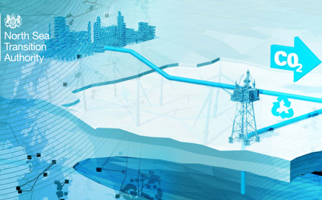
NSTA Chief Executive Stuart Payne delivered a speech during the plenary session of Offshore Energies UK's annual conference in Aberdeen on 17 September 2024. Stuart said the oil and gas industry can rise to the challenges posed by the energy transition and make the North Sea’s next chapter its best chapter. He also urged industry to maintain a sharp focus on the basics: safety, emissions cuts, timely well decommissioning and greater diversity. Read the speech below.
Introduction
As we have heard, today marks the 60th anniversary of the first oil and gas licence in the North Sea.
Granted by the Ministry of Power, a distant predecessor of the North Sea Transition Authority, it kicked off one of the most successful chapters in the UK’s proud industrial history.
Energy sourced from beneath the sea has provided light, heat and mobility. It has generated wealth and tax receipts, transforming communities like the north east of Scotland.
And it has spurred the development of a highly skilled, technologically focused supply chain, which now operates all over the world, with a high chance that wherever major developments exist there you’ll hear voices in Doric, Geordie, Scouse and many other accents from across the UK.
In my time with you today though, rather than look back at the last chapter I want to look forward to the next. I want to share with you our vision for the future North Sea, and highlight some fundamental basics industry needs to deliver on to help make it happen.
Getting the transition right
We all know that oil and gas production in the UK is in decline. Our projections show a continued fall through to 2050.
However, the rate of this decline is not guaranteed. The projects that deliver those projections require further investment. If we get the transition wrong, the decline could be much more rapid.
We know that means more imports to meet UK demand, in the case of gas with up to four times higher production and transport emissions for LNG.
If we get it wrong it means a lost opportunity to decarbonise production, leaving only older, dirtier assets in the basin.
And it means that world class supply chain dwindling or moving abroad, just at the time we need it to deliver the energy transition.
If we can get this right however, then the UK can be a shining example of how to transition an oil and gas province into a clean energy super basin.
If we get this right the next chapter of the North Sea can be its best chapter.
The potential is clear.
The North Sea has the natural resources – up to 5bn barrels of oil and gas, a 60GW target for offshore wind, up to 78GT of carbon storage potential.
It has the infrastructure – with key onshore terminals, offshore clusters and more than 100 pipelines with real repurposing potential.
And it has that world class energy supply chain and world class people that can link these parts of the story together.
At the NSTA we believe the way to make this transition work is through the integration of different energy systems.
We are heading into a new era of hub-based development.
Oil and gas hubs today can become decarbonised through connections with offshore wind farms, or power from shore, enabling cleaner production.
Oil and gas production in the future will be the feedstock for industrial processes, with the carbon dioxide emissions captured, transported and stored offshore, maybe through repurposed pipelines and into depleted fields.
This infrastructure will be powered by the clean electricity seeded years before.
By integrating these systems we make a virtue of what is currently a challenge – how to co-locate different technologies in the same small space of sea.
The future is now
This future isn’t actually that far away.
The NSTA hopes to shortly award the first two permits for carbon storage in the UK.
These projects – at HyNet in Liverpool Bay and Endurance off Teesside, will see new wells being drilled, infrastructure developed and some assets reused.
They are a huge moment showcasing real action delivering the transition.
But they are also just the start – we estimate the UK needs up to 100 appraised carbon stores and 120 new injection wells to meet the 2050 net zero target – a huge opportunity (and challenge) for the supply chain.
This month we’ve also seen the Green Volt floating offshore wind project awarded a CFD in the Government’s latest bidding round.
This project came about in part through a desire to decarbonise oil and gas production.
It’s a brilliant example of exactly the kind of integrated energy system we will need to develop in the future.
The basics
If industry is to get the chance to create this next chapter for tomorrow, then it’s essential that they’re fulfilling the basics today.
I don’t mean basic because they are easy, but basic because they are the core foundations of a credible and successful industry.
The first of those basics is safety. Many people here today won’t have been working in the sector just over 36 years ago when the Piper Alpha tragedy struck. As the memory becomes more distant and as we urgently push to develop new energy systems and technologies we must not become complacent about safety.
Nothing any of us is doing matters more than this.
The second basic is emissions reduction.
The production of oil and gas still contributes 3% of the UK’s total greenhouse gas emissions, that’s three times the total emissions of Birmingham.
Every other sector of the country is working to decarbonise its processes to reach net zero by 2050, and oil and gas is no different.
This industry has committed itself to this net zero goal, including interim targets of reducing emissions 50% by 2030 and 90% by 2040.
Let’s be clear that this is the absolute minimum required.
We have seen good progress so far. Our latest Emissions Monitoring Report shows that emissions fell by 28% between 2018 and 2023, half due to active measures and half through cessation of production.
Moving forward, as I’ve said before, UK production must be decarbonised production.
Our recently published OGA Plan makes it clear that where we consider electrification reasonable but it has not been done, there should be no expectation of consents to access further hydrocarbon resources on that asset.
This is not about constraining industry but enabling it to continue.
The next basic is decommissioning.
The most expensive single part – around 50% of all costs – in decom is well P&A.
When we grant licences, they include a commitment to decommission wells properly and in a timely manner.
Frankly, whether these obligations are met is a test of industry’s credibility.
A clear and visible test of whether the sector can be trusted, of whether it pays its bills or not.
The good news is many companies are fulfilling their duties. Decommissioning activities have been carried out on approximately 120 wells a year over the last five years.
The bad news is many aren’t. There are more than 1,500 wells that will need to be decommissioned by 2030, including 500 that have already missed their original deadline.
Not only do missed deadlines have a negative impact on industry’s reputation but it makes it harder for the supply chain to plan effectively, pushing up costs.
Our latest cost estimate report forecast over £20bn of decommissioning spend over the next decade.
This is a huge opportunity for the supply chain.
Decommissioning can be a vital bridge between oil and gas work today and carbon storage work in the future.
But if rigs continue to leave the basin because they don’t have a clear sight of upcoming work, these costs will only increase, making the transition harder to achieve and more expensive.
The NSTA is taking action here. As well as dealing with individual companies through our regulatory processes, we have launched a consultation on our plan to shine a light on operator performance.
It proposes naming those companies who fall behind on their commitments and publishing a league table of operator performance.
We want to hear from you on the proposals.
There is one final basic in this next chapter that I want to talk about today. And that is the characters who will write the story.
Specifically the diversity of these characters.
Last month I chaired a roundtable meeting with our new Minister.
We invited many of the senior figures from our industry and had a cast list of about 15 people. Only one of those was a woman. Everyone was white.
This isn’t just a glib, ‘woke’ observation. I don't raise this to make me feel better.
It matters.
It matters because the challenges this industry needs to overcome to deliver the transition are hard.
It matters because we are going to need the best team possible to be successful.
It matters because to try and do these things without the best talent and a diverse and inclusive workforce is like trying to win with only half the squad available.
So a call to action to all of us - we need to up our game in how we appeal to talent from all different backgrounds to come and work in this sector, especially talented professionals early in their careers, just like Isla and Katy who we’ll be hearing from shortly.
Conclusion
As we look ahead to the next 60 years of the North Sea we see a vast set of opportunities, and we acknowledge too the very real challenges in the way.
Those challenges are real, they’re tiring and can feel overwhelming.
But this sector has faced many challenges before; the challenges of crashing oil prices, of conflict, of having to push the boundaries of technological and geological understanding and in the darkest days – challenges of safety.
Industry has risen to those challenges, and it will rise to today’s as well
Getting this transition right is a huge challenge, but one we chose to embrace and one which we are already realising.
Get the basics right and the next chapter can be the safest, cleanest and most exciting in the North Sea story, the next chapter really can be the best chapter.
END
Please note - There may have been some slight variations in the delivery of this speech.
For further information please contact:
Tel: 07776 548196


